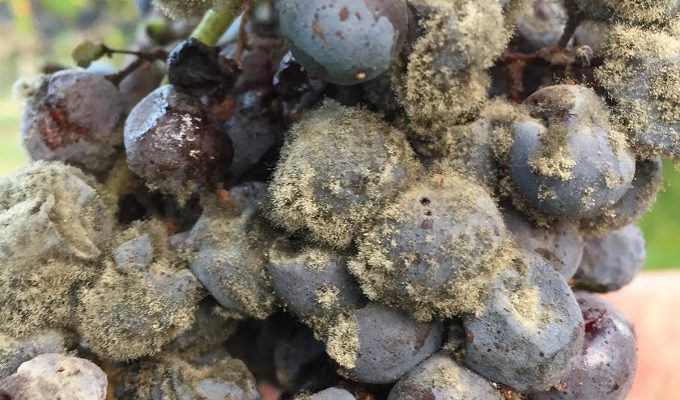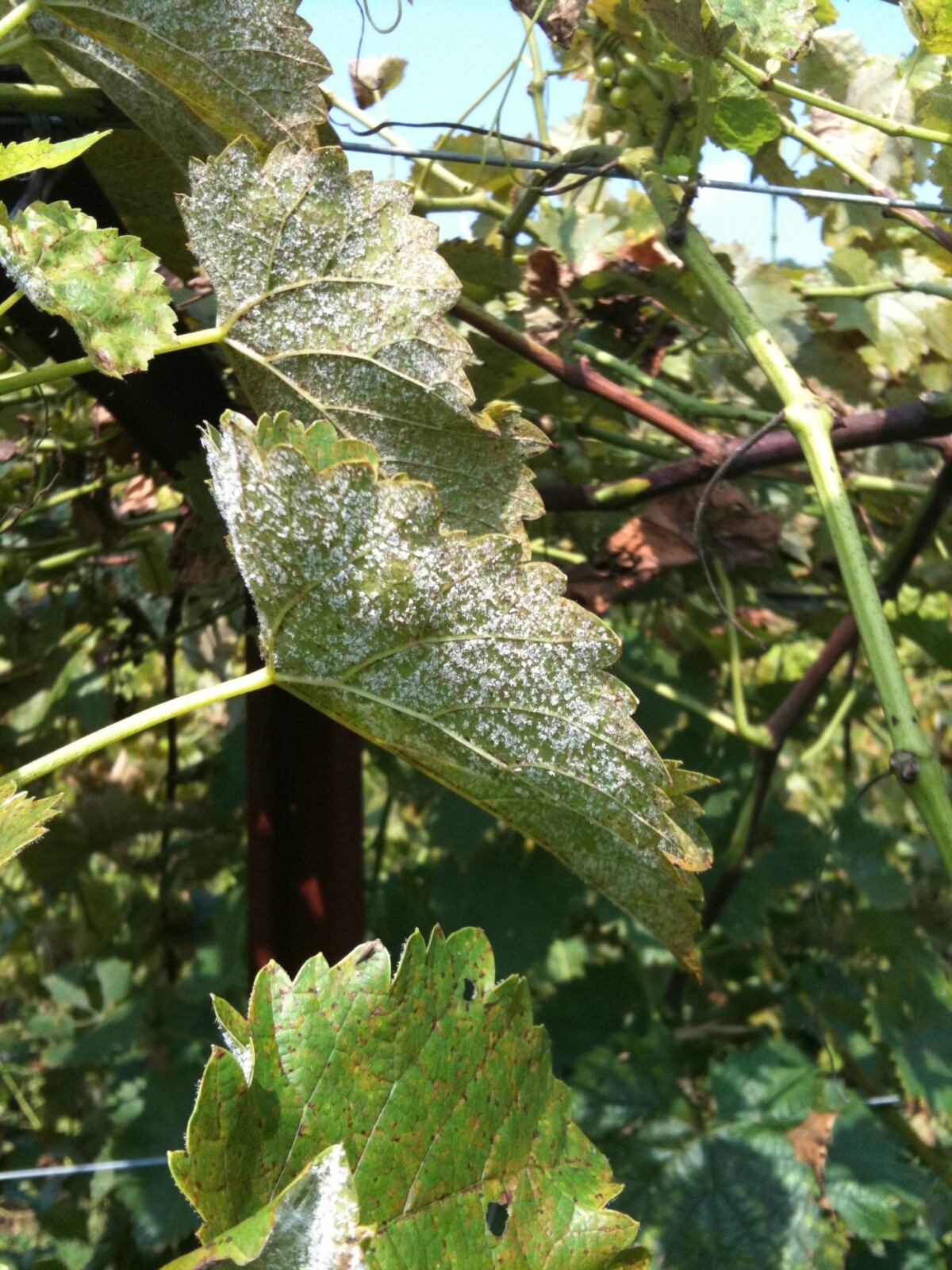Phil Brannen
-
The attached may make for good bedside reading, but I do think it is worthwhile information for you to review. I am including a research report as well as photos by replication (six reps of each treatment). We conducted a trial looking at low rates of captan, high rates of copper, and a biological control.…
Posted in: Uncategorized -
As most of you are aware, EPA developed a Proposed Interim Registration Review Decision (PID) for mancozeb, and as proposed, mancozeb use on grapes would no longer be allowed. Yesterday, Katie Gold (Cornell University) and I visited with several EPA personnel at the Washington, D.C. headquarters concerning the importance of mancozeb to grape production in…
Posted in: Uncategorized -

You might be interested in the results of our sulfur trials on V. vinifera grapes over the last few years. With the advent of powdery mildew resistance to both the QoI (FRAC 11) and DMI (FRAC 3) fungicides in many northern Georgia vineyards, we have tried to learn more about how we can utilize sulfur…
-

If you see Botrytis in your grapes, it is always a good idea to test for fungicide resistance in your pathogen population. While the funds last, you can receive free testing. The results can provide you with information on which fungicide classes are working and which are not. This will allow you to switch fungicides…
-

I know that many of you have had questions concerning mancozeb use this year and moving forward. Katie Gold (Cornell University) reached out to Kelly Sherman with the Pesticide Re-Evaluation Division concerning mancozeb reregistration, and she did receive an informative e-mail response. There is still no specific answer relative the EPA actions concerning mancozeb use…
-
See attached for a letter from EPA that extends the date for mancozeb comments till 16 October. I am also including the actual mancozeb review document for your reference as needed. I know that most of you are in the middle of harvest, so I hope this will help to provide a little more time…
Posted in: Uncategorized -
As you are all aware, mancozeb is one of the backbone fungicides for our grape spray programs. EPA is already making changes to captan labels, and though some of these changes will be onerous, they have no impact on our ability to grow grapes in Georgia as compared to the complete removal of mancozeb labels…
Posted in: Uncategorized -
As most of you are aware, spotted lanternfly (SLF) will soon be in Georgia, and it is already being found throughout the Southeast and other regions. Recent research from Penn State has indicated that the SLF can also spread Pierce’s disease (PD), though the degree of spread is not known. See the link below for…
Posted in: Uncategorized -
As I have reported over the last 2-3 years, we are observing warming winter temperatures, and as a result, we are also observing increasing levels of Pierce’s disease (PD). With colder winter temperatures, the bacteria that causes PD, Xylella fastidiosa, can actually be “cured” from the vine. With warmer temperatures, the bacteria survives and kills…
Posted in: Uncategorized -
In Georgia and the Southeast as a whole, we grow vinifera, muscadine and other native grapes, and various hybrids. The acid profiles of these grapes are highly variable, and they will contribute to the quality of wines produced. Dr. Abhinav Mishra (UGA Food Science Department) will be conducting some preliminary experiments to explore the acid…
Posted in: Uncategorized
